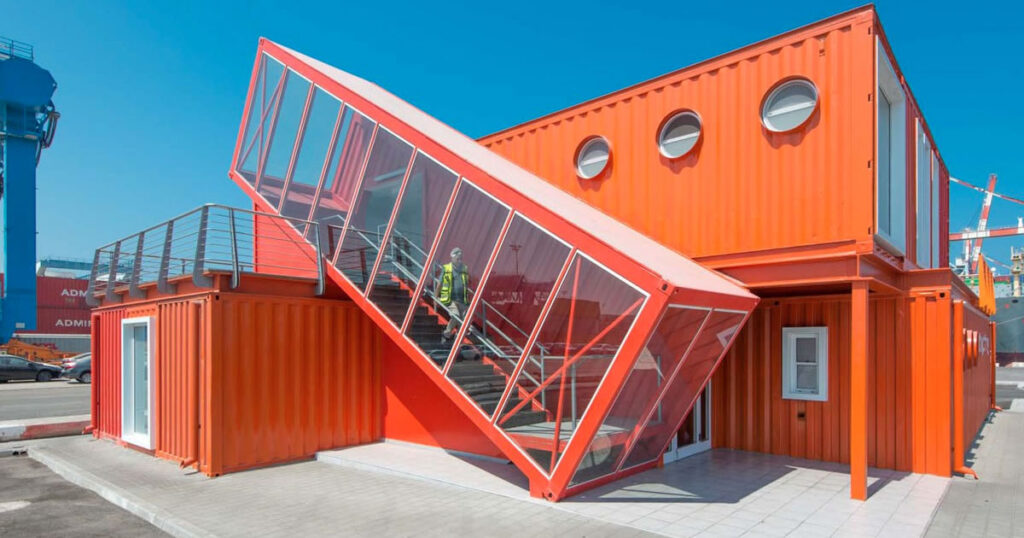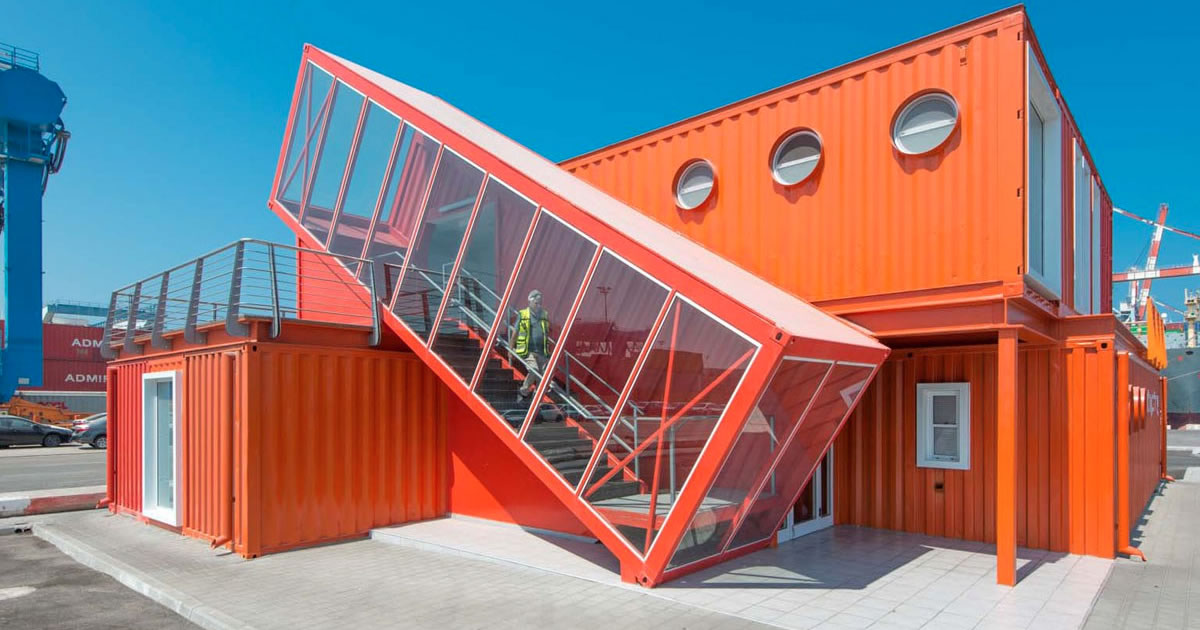Have you ever thought about turning a shipping container into a cosy home, an inspiring office, or even a community centre? This idea, far from being a wild fantasy, has blossomed into a substantial movement within sustainable construction.
Containers for sale, those large steel boxes used for transporting goods across the ocean, are now finding a second life as building blocks for innovative and eco-friendly structures. This transformation is not just about recycling; it’s a profound statement on sustainability, creativity, and the repurposing of materials that otherwise might rust.
This guide will walk you through the ins and outs of shipping container modifications service in Melbourne, offering the know-how to embark on your sustainable construction project.
Benefits of Shipping Container Modifications for Sustainable Construction
The movement towards sustainable construction is a crucial step in combating environmental challenges. One innovative approach gaining momentum in the industry is modifying shipping containers for buildings and homes.
This method not only capitalises on repurposing materials but also boasts several benefits that contribute to its growing popularity.
-
Cost-Effectiveness
One of the significant advantages of using shipping containers for construction is the cost-effectiveness. Compared to traditional building materials, shipping containers are relatively inexpensive.
Additionally, a lot of the cost savings come from the reduced need for extensive foundational work and the ease of stacking them for multi-level structures. This aspect makes them a highly attractive option for budget-conscious builders and developers aiming for sustainability without breaking the bank.
-
Durability
Shipping containers are designed to endure harsh conditions while protecting valuable goods during transport across oceans. This inherent durability makes them excellent candidates for sustainable construction. They are resistant to wind, water, and pests, which are common concerns in traditional construction materials.
Furthermore, when properly maintained, shipping containers can have a significantly lengthy lifespan, further contributing to their sustainability by reducing the need for frequent repairs or replacements.

Steps to Modify Shipping Containers for Sustainable Construction
Modifying shipping containers for sustainable construction is a creative process that requires careful planning and execution. The following steps outline the journey from a standard shipping container modifications Melbourne to an eco-friendly building structure.
-
Planning and Design
The first and perhaps most crucial step is the planning and design phase. It involves evaluating the project’s needs, selecting the right containers, and conceptualising the design. This phase requires considering factors such as local building codes, the intended use of the structure, and the overall environmental impact.
Employing the services of a professional experienced in shipping container modifications can ensure that the design is both functional and sustainable.
This step also involves deciding on the layout, number of containers needed, and how they will be configured to meet the project’s objectives.
-
Insulation and Climate Control
Effective insulation and climate control systems are essential for shipping containers to be suitable for human occupancy. Insulation is critical in maintaining a comfortable interior temperature, regardless of outside weather conditions.
There are various eco-friendly insulation options available, such as spray foam, which provides high insulation value and acts as a barrier against moisture, or recycled cotton insulation, which is both sustainable and effective.
Moreover, incorporating passive design principles, such as strategic placement of windows for natural ventilation and light, can significantly reduce the reliance on artificial heating and cooling systems, enhancing the sustainability of the construction.
-
Structural Modifications
Modifying the structure of shipping containers to fit the construction needs is a task that requires expertise. This step might involve cutting openings for doors and windows or even removing entire sides for larger spaces.
Reinforcement may be required depending on the extent of the modifications to ensure the structural integrity of the container is not compromised. Additionally, plumbing, electrical wiring, and other utilities are considered during this phase.
It’s crucial to prioritise the use of sustainable and eco-friendly materials throughout this process, such as using reclaimed timber for framing or recycled materials for interior finishes.
Innovative Uses of Modified Shipping Containers in Sustainable Construction
The world of sustainable construction constantly evolves, finding new and eco-friendly ways to build. Among the most exciting developments in recent years is the modification of shipping containers for various construction projects.
These robust steel boxes are no longer just for transporting goods across oceans but have found a second life in the construction industry, serving as a cornerstone for sustainable building practices.
Let’s dive into some of the most innovative uses of these repurposed materials.
-
Tiny Homes
One of the most popular trends in sustainable living is the tiny home movement, and shipping containers have become a go-to choose for these compact dwellings. The appeal is easy to understand: their inherent structure provides a sturdy and weather-resistant shell, drastically cutting down construction time and costs.
Moreover, these tiny homes can be outfitted with solar panels, composting toilets, and rainwater harvesting systems, making them even more eco-friendly. The modularity of containers also allows for creative designs, from single, minimalist spaces to multi-container family homes.
-
Offices and Workspaces
In the era of startups and flexible workspaces, shipping containers offer an innovative solution for office construction. Their modular nature makes them excellent for custom workspaces, from individual offices to large, open-plan spaces that encourage collaboration.
Containers can be stacked and combined in various configurations, creating unique and inspiring environments.
Additionally, they can be easily transported and repurposed, providing businesses the flexibility to expand, relocate, or modify their spaces with minimal environmental impact.
-
Retail Spaces
Shipping containers have also made their mark in the retail sector, serving as dynamic and environmentally friendly venues for shops, cafes, and pop-up stores.
Their strategic use allows businesses to reduce construction costs and carbon footprint, promoting sustainable growth. These spaces can quickly adapt to changing trends and locations, offering a fresh approach to retail that emphasises lower resource use and a smaller environmental impact.
Their distinctive appearance and adaptability also offer a unique shopping experience, drawing in customers looking for something different.
Environmental Impact of Using Shipping Containers in Construction
Utilising shipping containers in construction projects comes with a host of environmental benefits, contributing significantly to the sustainability of the industry.
Here, we outline the pivotal ways through which shipping container modifications are making a difference.
-
Reducing Carbon Footprint
The repurposing of shipping containers for construction purposes has a profound effect on reducing the carbon footprint associated with building. Manufacturing new construction materials is energy-intensive and contributes significantly to global CO2 emissions.
In contrast, shipping containers are abundant and often lie unused after transporting goods. By converting these containers into liveable spaces, the need for new materials diminishes, significantly cutting down energy consumption and greenhouse gas emissions.
-
Decreasing Waste
Construction and demolition activities generate a considerable amount of waste, much of which ends up in landfills. However, the use of shipping containers dramatically decreases the amount of waste produced. Since these containers serve as the primary structure for projects, the need for traditional building materials like wood, brick, and concrete is reduced.
This not only lessens waste but also minimises the depletion of natural resources, steering the construction industry towards a more sustainable path.
-
Promoting Eco-Friendly Practices
Beyond the direct environmental benefits of using shipping containers, their adaptation in construction also fosters a broader culture of sustainability. These projects serve as tangible examples of successful green building, inspiring others in the industry to consider eco-friendly practices.
From the integration of renewable energy systems to the innovative reuse of materials, shipping container constructions showcase how sustainable methods can be both practical and aesthetically pleasing.
Additionally, they encourage the public and professionals alike to think creatively about reducing their environmental impact, promoting a ripple effect of positive change across the construction sector.
Conclusion & Future of Sustainable Construction
In wrapping up our journey through the innovative realms of shipping container modifications Melbourne service for sustainable construction, it’s clear that these sturdy boxes offer more than just a quirky, eco-friendly housing option.
Their adaptability, durability, and ease of use make them attractive options for anyone looking to invest in eco-conscious construction, whether for a cosy home, a bustling cafe, or an expansive office complex.
The future seems bright for sustainable construction, which has shipping containers at its core. As more individuals and corporations adopt these green building practices, we can anticipate a significant reduction in construction waste and increased repurposed materials.
As we forge ahead, supporting and investing in sustainable construction methods becomes increasingly important. Shipping container modifications represent a step towards a more eco-conscious world, and their role in the future of construction can only grow from here.
Let’s embrace these innovative solutions and work together to build a more sustainable, efficient, and aesthetically pleasing world for future generations.

